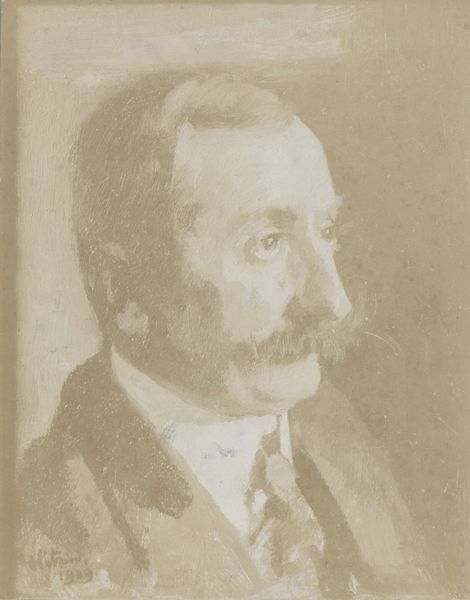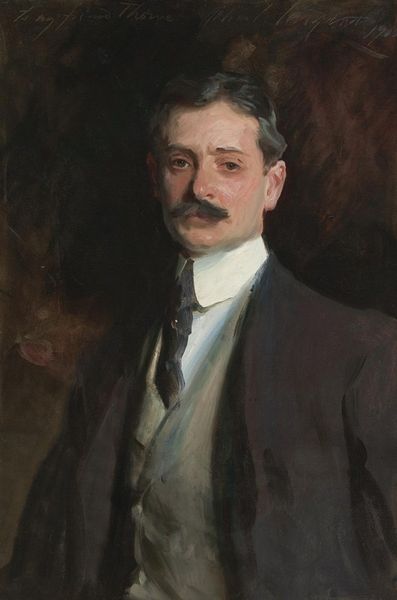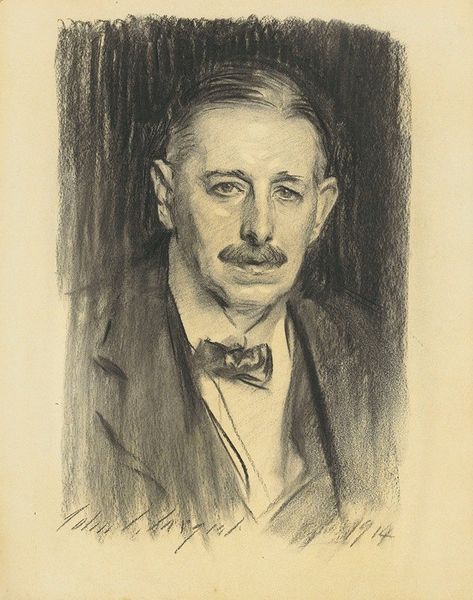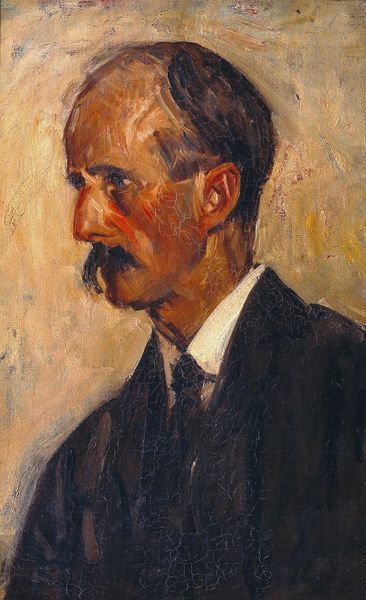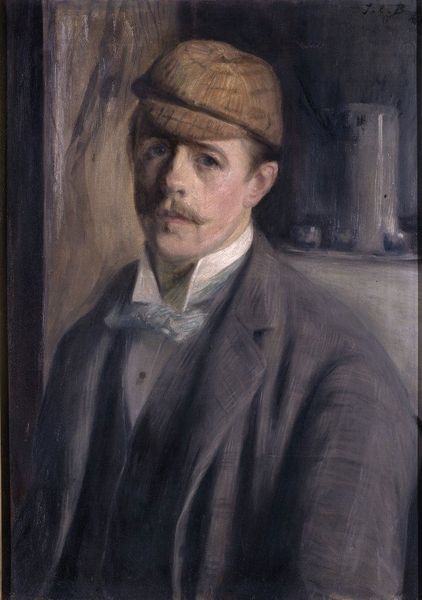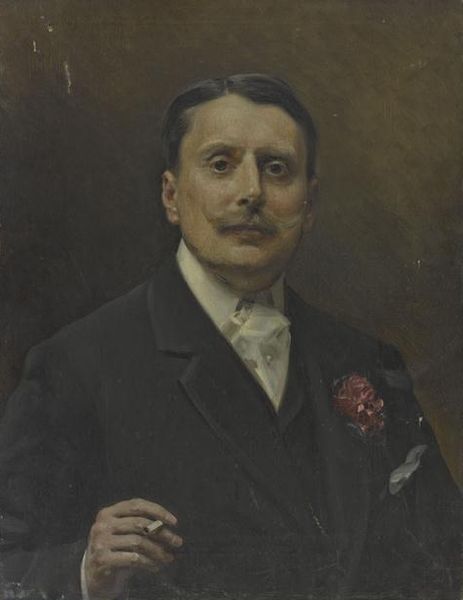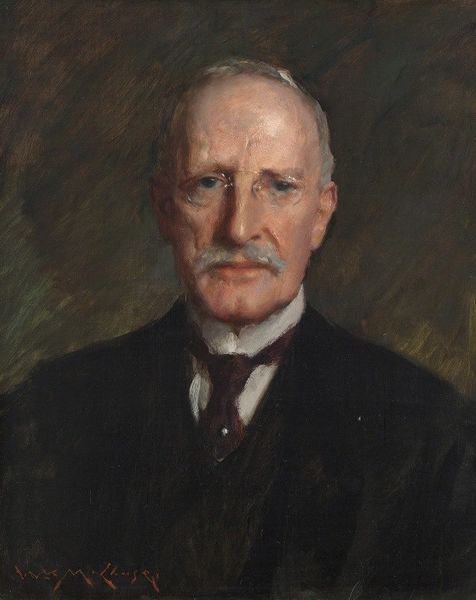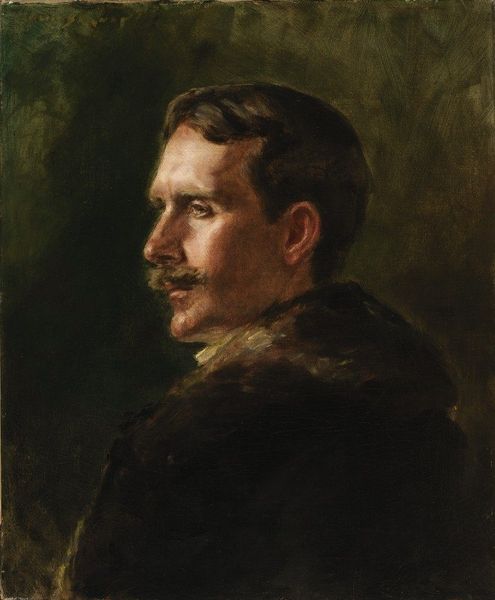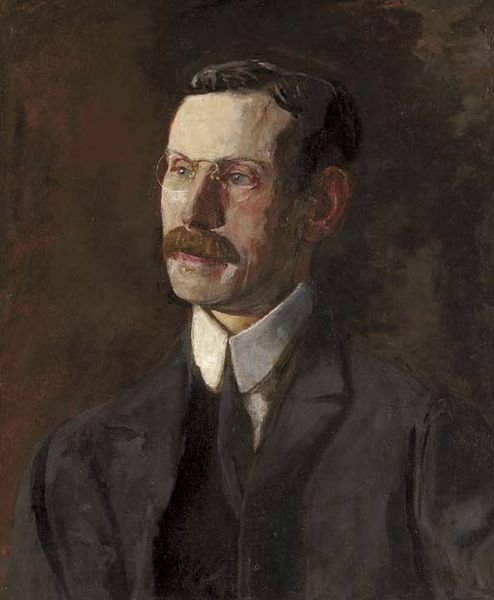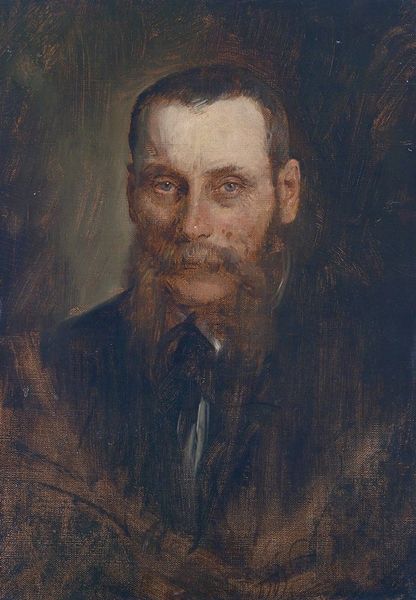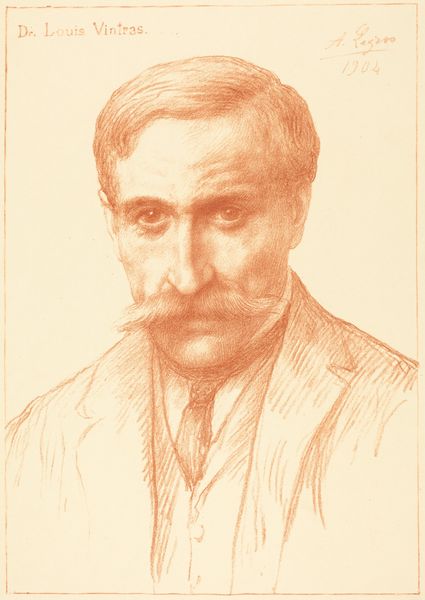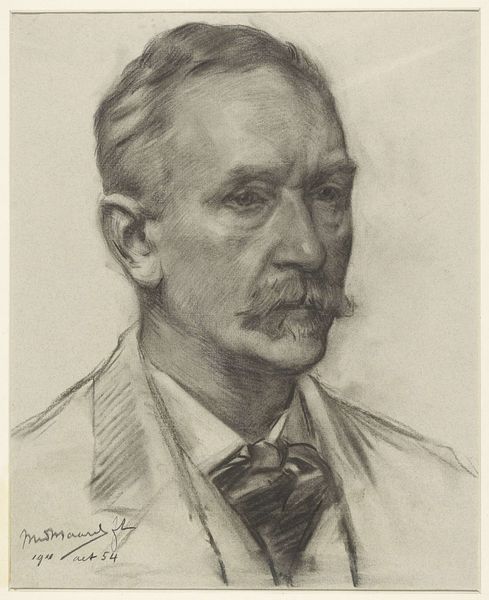
painting, oil-paint
#
portrait
#
16_19th-century
#
painting
#
impressionism
#
oil-paint
Copyright: Public Domain: Artvee
Editor: So, this is Alice Pike Barney's "A.C.B.," painted in 1887, using oil paint. It’s a rather straightforward portrait, almost academic in its presentation. What strikes me most is the visible brushwork; you can really see the artist's hand in creating the textures, especially on the face and clothing. What can you tell me about the materiality and the social context influencing its creation? Curator: What grabs my attention immediately is how the very application of the oil paint—the thick impasto in the face and the looser strokes in the background—speaks volumes about class and gender at the time. The materiality here isn’t just about aesthetics; it’s about labour. Barney, as a woman from a privileged background, had the luxury of time and resources. Editor: How do you see that manifested? Curator: Think about the pigment itself. The availability and cost of certain colors would’ve reflected global trade and colonial power structures. Barney's access to these materials allowed her to engage in a very specific kind of creative labor. The portrait is also distinctly Impressionistic. Does it not present an explicit nod to leisure and social positioning? A commentary on the sitter's identity. Editor: That’s a perspective I hadn't considered. It makes me consider the canvas itself as a site of these power dynamics, rather than just a passive surface. Curator: Precisely! Even the decision to render a "simple portrait" is laden with social implications. It highlights the societal function of portraiture at the time. Consider how Barney navigated these boundaries. It allows us a richer and less traditional reading of this piece, don't you think? Editor: Definitely. Looking at it now, it's more than just a portrait. It becomes a layered record of access, production, and societal expectations.
Comments
No comments
Be the first to comment and join the conversation on the ultimate creative platform.
